-
Happiness Found: San Jose’s Storybook Homes

According to WalletHub, San Jose is among the top ten happiest cities in the United States in 2021. While they did a study and have data to support this, I can tell you my own reasoning why it should make the list. Everything seems somehow brighter and more vibrant here. The sky is a little bluer, the trees a little greener, and the air a little sweeter. Even though it is a huge city, there is also a peaceful sense of community and small town friendliness. It just exudes some kind of invisible harmonious energy. While visiting the Municipal Rose Garden this past week, I stumbled upon another reason San Jose qualifies for this list. San Jose’s stunning variety of storybook homes! It was a beautiful bit of serendipity, and indeed I felt truly, deeply happy.
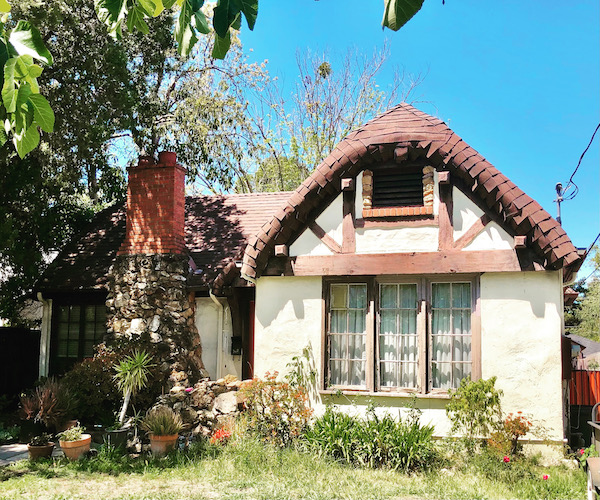
I have become a hopeless addict of these magical cottages, ever since I moved to the Monterey Bay area and discovered the Fairy Tale Cottages in Carmel-by-the-Sea. Storybook homes became very popular during the 1920s, especially here in California. Those steeply pitched gables, oddly shaped windows and doors, and crooked little stone chimneys just speak to me. Imagine my delight when I turned on a side street near the rose garden and unexpectedly hit the bonanza!
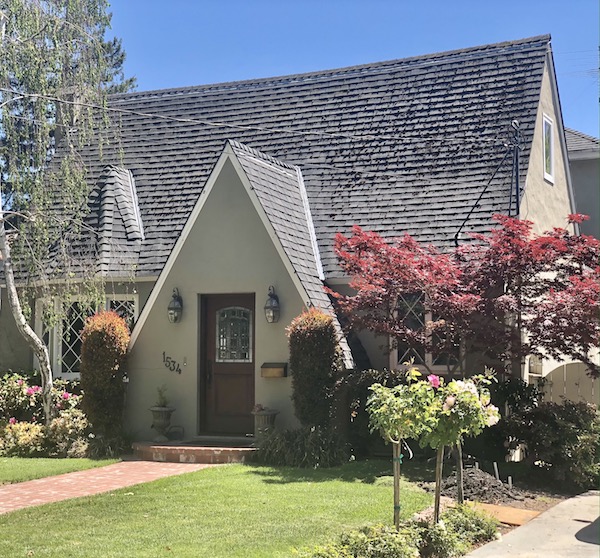
The majority were on McDaniel and Emery, near the rose garden. I also discovered more of these captivating cottages on Calaveras and Shasta. I was in storybook heaven! It was like stepping into a fairy tale.
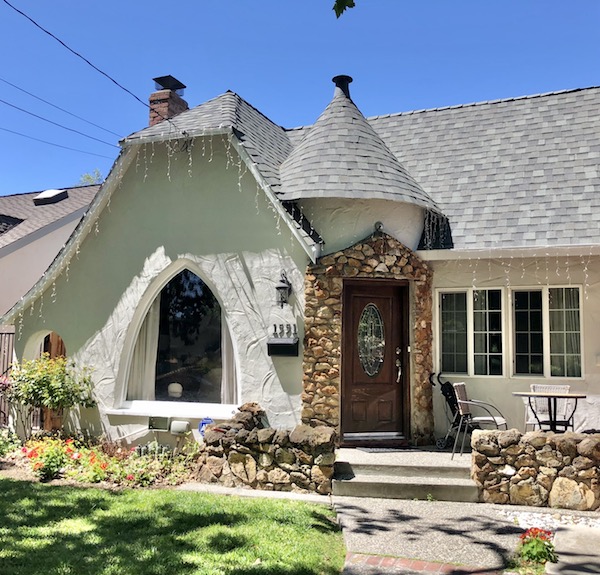
I love the quirky tower and the texture of the stones framing the door. The little fence carries over the natural stone theme.
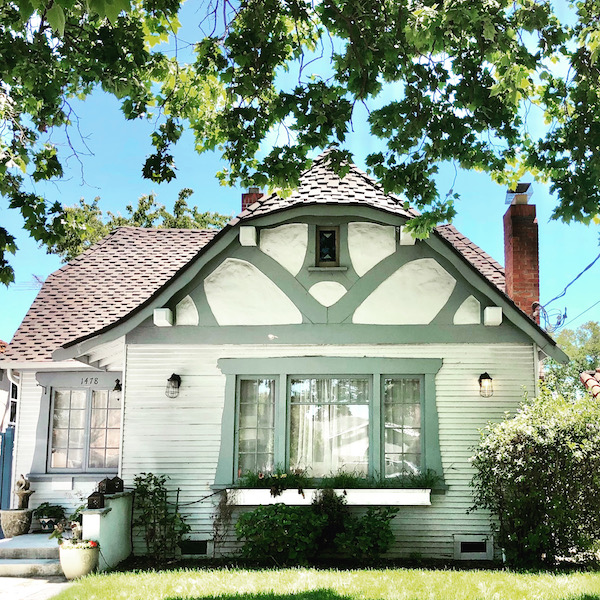
This looks like it is straight out of Goldilocks and the Three Bears.

The storybook homes here just feel so cozy.

A rose canopy on the front window of this house is simply enchanting.
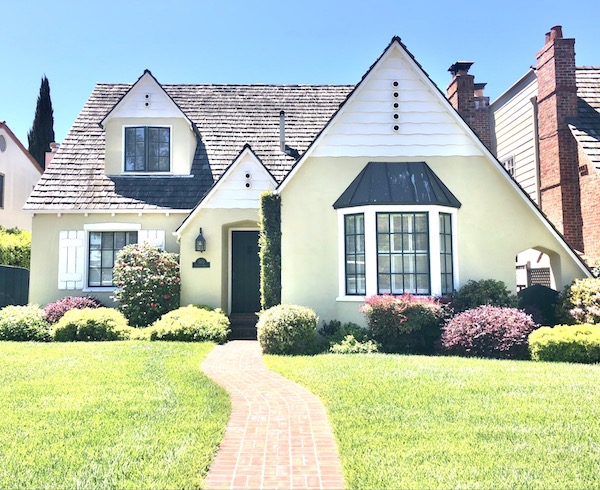
This house directly faces the Municipal Rose Garden.
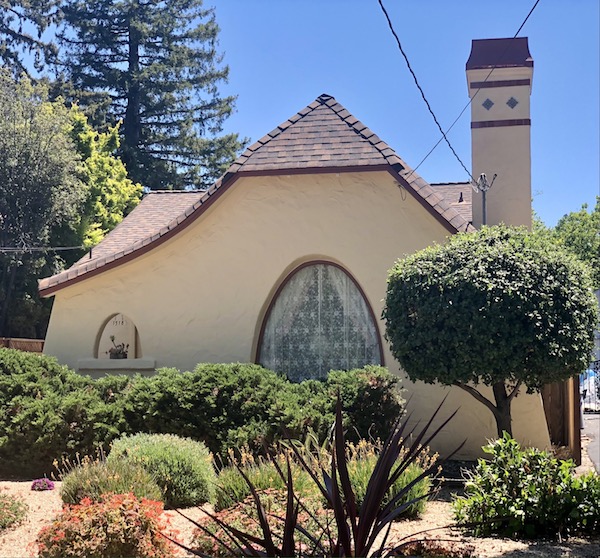
I love how the little cut out window on the left mirrors the big picture window.
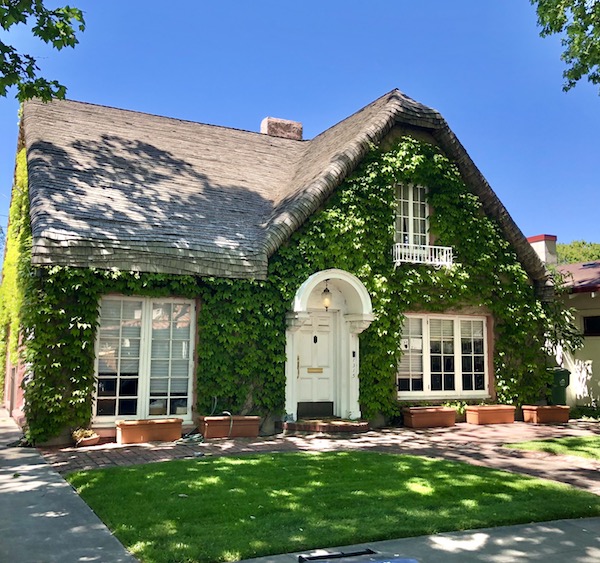
This should definitely be called Ivy Cottage. 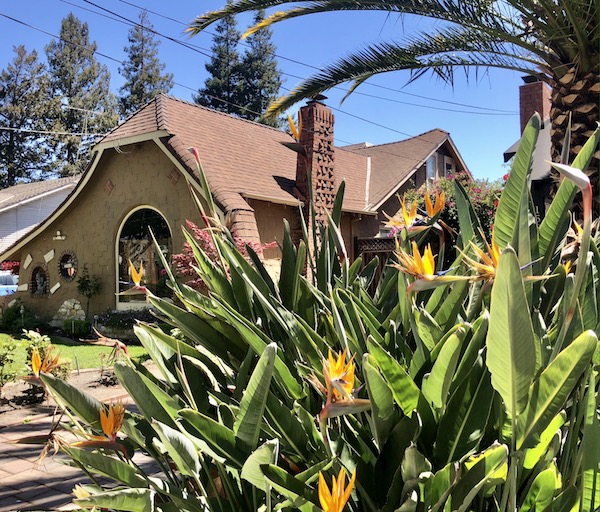
Surrounded by bird of paradise flowers, this home features whimsical windows and randomly placed bricks near the entryway.
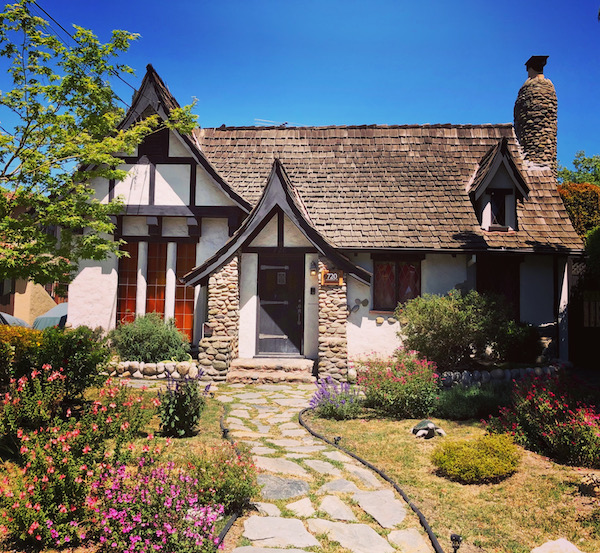
I saved the best for last! I love the quaint stone chimney, little dormer window, and curving pathway of this charming cottage. Thank you for visiting my blog. I hope you enjoyed the magical storybook homes of San Jose. They help us believe in a world where fairy tales still exist. And a place where everyone lives happily ever after. And finding happiness in all the little things is what life is all about. You may also enjoy 12 Storybook Cottages to Enchant You! Wishing you peace, love, happiness, and beautiful vistas!
-
What the Color of Your Flowers Says About You
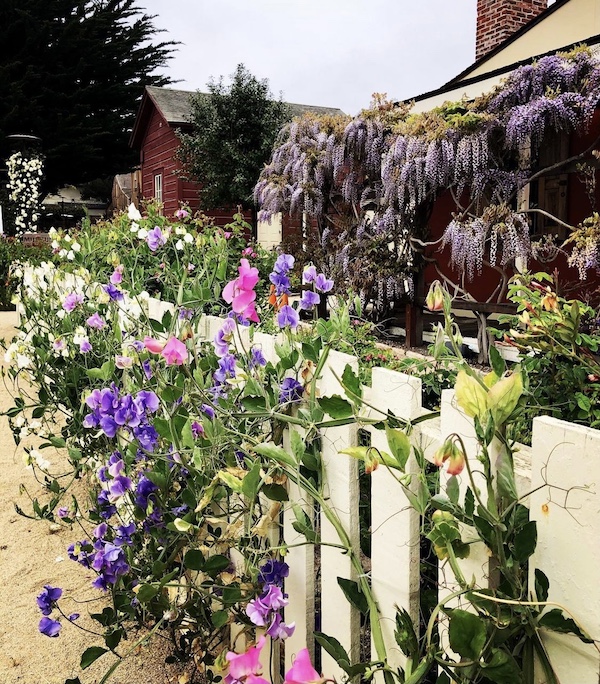
What is the first thing you notice about a flower? For most people, it is the color. Many people are unaware of the impact colors have on our thoughts, emotions, and behaviors in everyday life. When planting a garden, many people choose flowers instinctively, drawn to shades that subconsciously may be revealing their true personalities. Here is what the color of flowers you choose says about you!

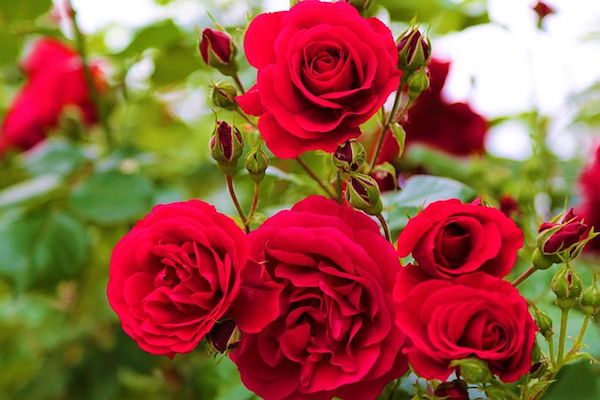
Red. Red geraniums, dahlias, roses, tulips and more are some plants red loving gardeners may choose. Chances are, if you love the color red, you are an extrovert. Other traits you may possess include enthusiasm, passion, and adventure seeking. Red lovers may also be bold, impulsive, and sometimes intimidating!
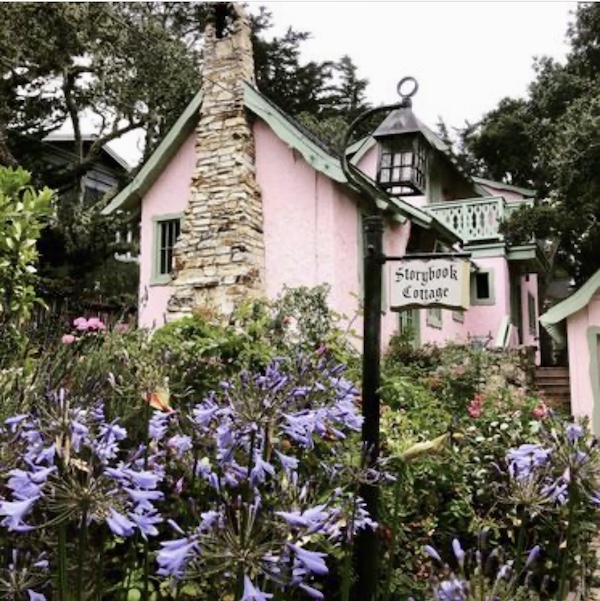
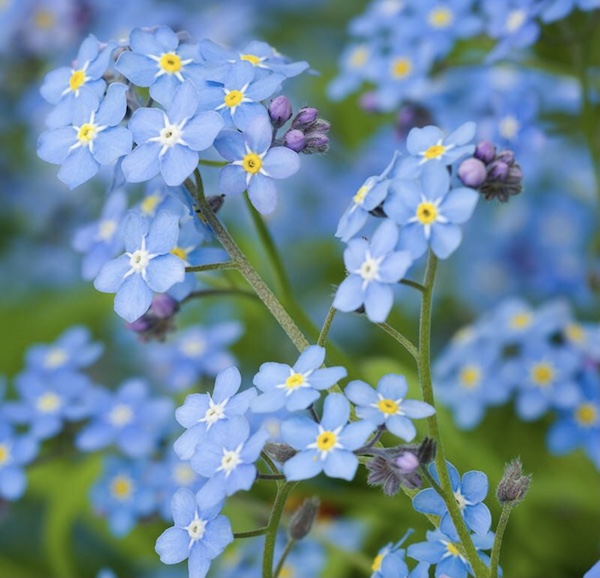
Blue. Delphiniums, irises, forget-me-nots, agapanthus, and phlox are flowers blue loving gardeners may select. Blue lovers are generally strong, conservative, peaceful, and trustworthy. People may look up to you due to your sensitivity, gentleness, stability, compassion. and loyalty.
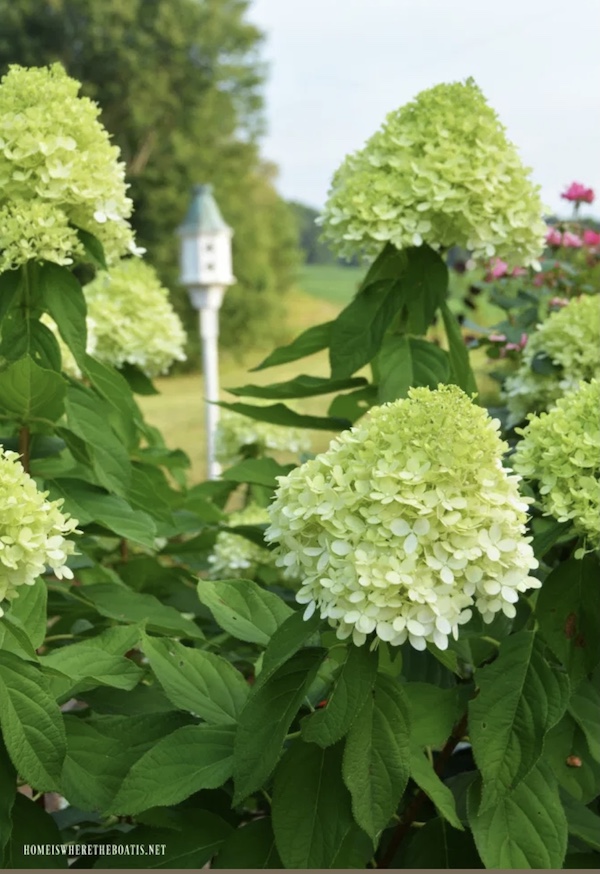
Photo courtesy of homeiswheretheboatis.net 
Green. Green flowers include: bells of ireland, zinnias, chrysanthemums, hellebores and hydrangeas. Those who prefer the color green in their gardens are likely practical and down-to-earth. They are often sought out for their advice. They enjoy nature and find balance in life important. Green lovers are also problem solvers and often think outside the box.

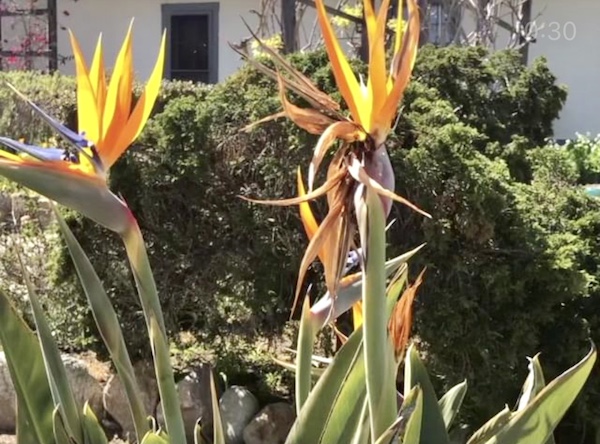
Orange. Orange lovers may like poppies, marigolds, bird of paradise, tiger lilies and dahlias. Gardeners who love orange tend to be fun and playful, nurturing, social butterflies, cheerful, and love to get things done in a timely fashion.
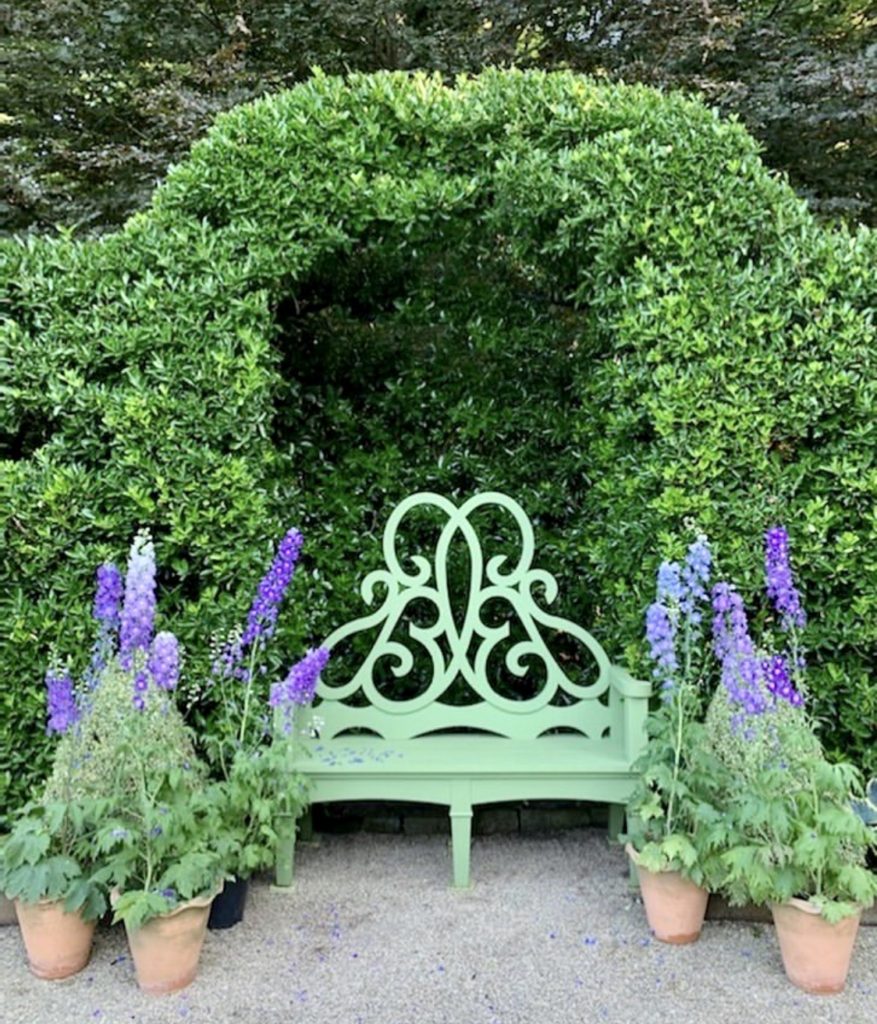

Purple. Verbena, lavender, clematis, bellflower, and iris are flowers purple lovers may choose. Purple loving gardeners are highly individualistic and quick-witted. They thrive on creativity, uniqueness, and random inspiration. They are not afraid to dance to the beat of their own drum.
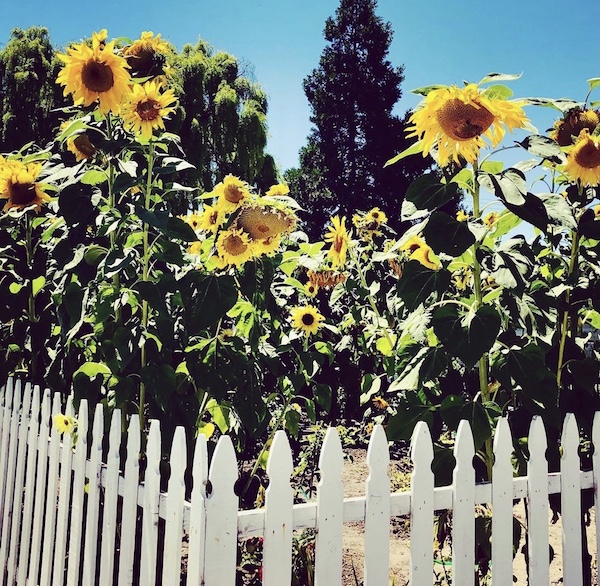

Yellow. Sunflowers, marigolds, yarrow, calendula and day lilies are favorites of yellow loving gardeners. Yellow is a color associated with optimism, cheerfulness, and imagination. You may tend to exert a calming influence on others. Those who love this color often have a positive spirit and are faithful friends.
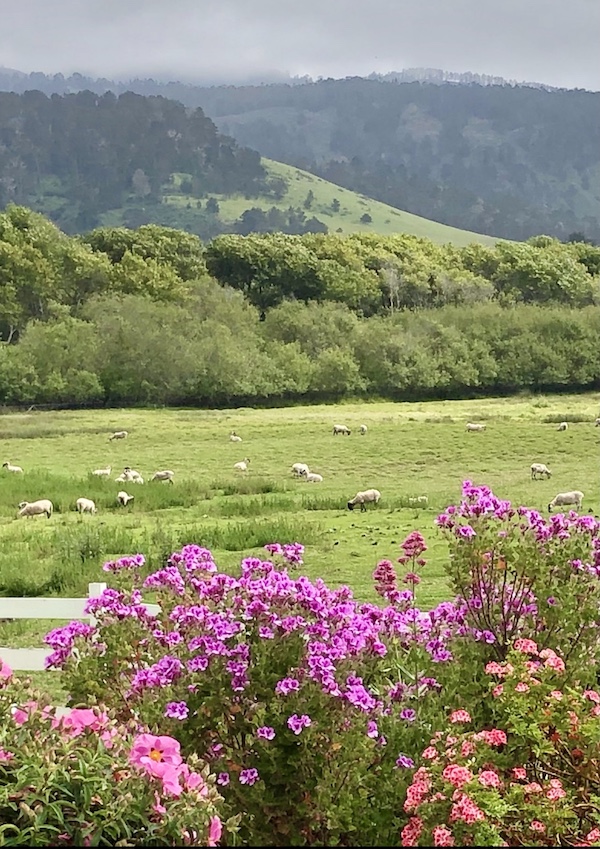
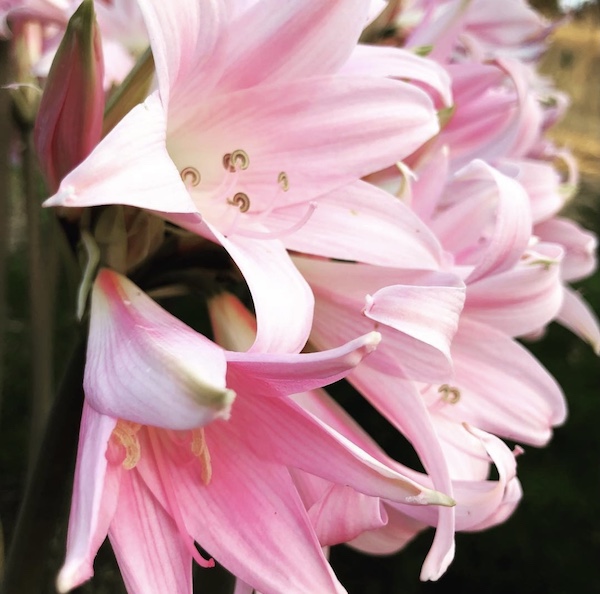
Pink. Pink roses, peonies, sweet peas, zinnias, stocks, and clematis are admired by pink loving gardeners. If you are drawn to pink, you tend to be warm, charming and embrace romance. Having fun and being playful are also qualities associated with pink lovers. Pink lovers are also tend be family oriented and feel comfortable showing their emotions. The expression “wearing your heart on your sleeve” may apply to you if you love pink.
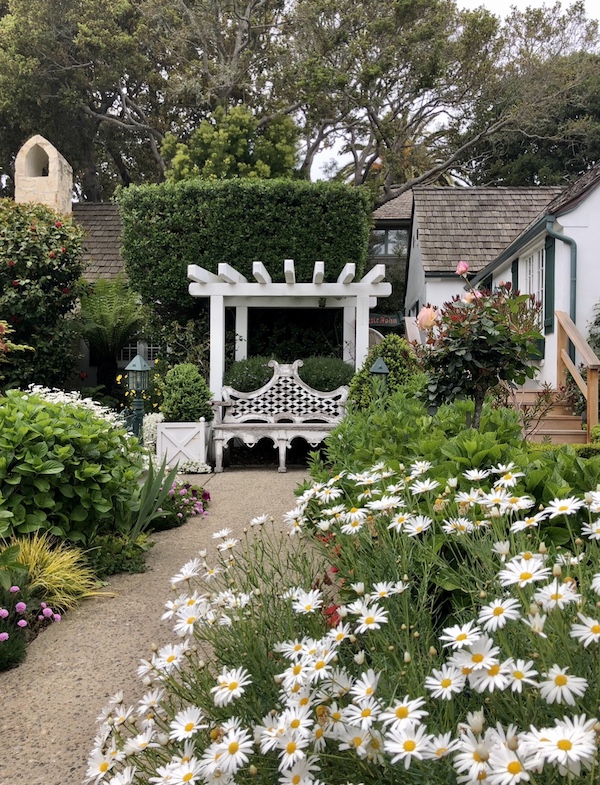
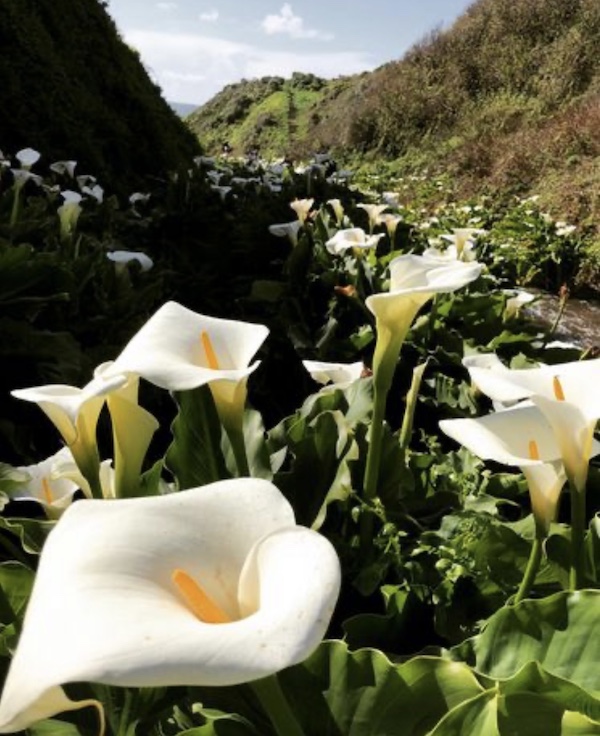
White. Baby’s breath, cleome, cosmos, jasmine, daisies and calla lilies are flowers white loving gardeners may be drawn to. If you love white flowers, you tend to be a calm and peaceful person, searching for the perfect zen in your garden. You like things clean, simple, and orderly. White is also associated with innocence and naivety.
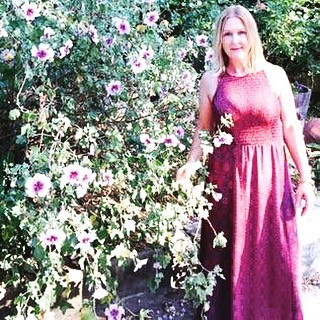
What color flowers do you like? It is interesting to learn about how color and personality are linked! You may want to explore this topic further by reading Garden Flower Folklore, by Laura C. Martin. You may also enjoy Prettiest Wildflowers in Monterey County, From A-Z and The Secret Gardens of Historic Monterey. Thank you for visiting my blog! Wishing you peace, joy, happiness, and beautiful vistas!
-
Twelve Best Places to Hike in Monterey County!
Of all the paths you take in life, make sure a few of them are dirt~ John Muir. One of the nicest things about living here in Monterey County is the plethora of areas to hike. No matter your age or experience, there is always a trail for you here. The following is my list of the twelve best places to hike in Monterey County.

Lined up like beach bananas, these harbor seals have found a peaceful paradise in which to snooze at Point Lobos. #1. Point Lobos State Natural Reserve. Located three miles south of Carmel on Highway 1, Point Lobos has very easy walking trails as well as more challenging hiking trails from .8 to 2.9 miles. It provides a tantalizing sensory experience with the sunlight sparkling on the bay and the fresh scent of towering cypress trees. You will also have some great views of wildlife here. Park your car outside the park and enter for free! No dogs are allowed. For more information, see Point Lobos: Crown Jewel of State Parks.

#2. Andrew Molera State Park. This is located 20 miles south of Carmel on Highway 1. Some of my die-hard hiking friends swear this is their #1 go-to hike. The shortest hike here is 1.7 miles and the longest, per my hiking friend Brian, is about 10 miles. Hikes vary from easy to strenuous. Keep in mind that in the spring, the Big Sur River can become swollen and you will have to wade across. Otherwise, there is a seasonal foot bridge when the river is low. A really cool thing about this area is the magenta and purple hued sand. This is due to the dramatic manganese cliffs along shoreline. It is not uncommon to spot whales from the beach here. It is one of the local favorites for sure! No dogs are allowed. For more information, see Andrew Molera.
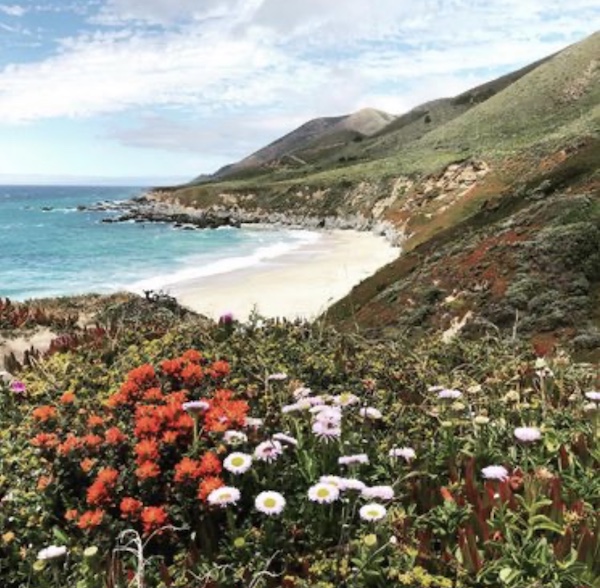
#3. Garrapata State Beach. Located 6.7 miles south of Carmel on Highway 1, Garrapata is another local favorite. It features spectacular views of rock formations, cliffs, and wildflowers that are simply magical. In addition, Doud Creek runs through exquisite Calla Lily Valley to the sea near this 1.1 mile loop. This is a moderate level hike due to the steep staircase and uneven terrain. Dogs are allowed but must remain on leash.

#4. Partington Cove. Address: 51354-51358 Highway 1, Big Sur. This is a 1.1 mile trail featuring wildflowers, a waterfall, a wooden bridge, and a cool tunnel. I would highly recommend this for families with kids, it’s super fun and not too strenuous. For more information, see Partington Cove: Tanbark Tunnel to the Sea. Keep in mind you will need to navigate a steep hill to get back to the road.

#5. Jade Cove. This is pretty hard to find, but oh so worth it. Located on Highway 1 approximately 60 miles south of Carmel and 30 miles north of San Simeon, this is a hidden gem. This is a .3 mile hike that offers breathtaking views of the ocean and also an enchanting hike down to the beach to look for beautiful Big Sur jade. Because it is very challenging to get from the cliffside down to the beach, this is a moderate hike. Dogs are allowed but must be kept on leash. For more information, see Sand Dollar Beach & Jade Cove in Big Sur.
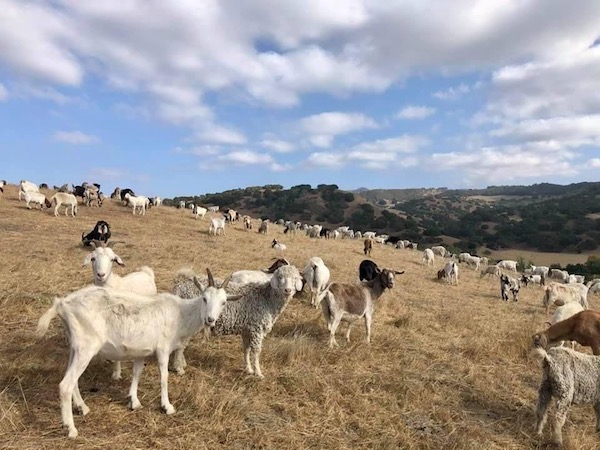
#6. Fort Old National Monument-Badger Hills Trailhead. This is located between Salinas and Monterey at 692-696 Highway 68. In the early spring, hundreds of goats dot the hillside, munching away to help mitigate wildfire risk. The wide former military roads are perfect for social distancing, but there are also many more secluded and narrow dirt trails. This is good place for beginners through advanced hikers as there are multiple levels of difficulty and lengths you can choose. Tons of mountain bikers come here too. Dogs are welcome but must be on leash. For more information, see Fort Ord.
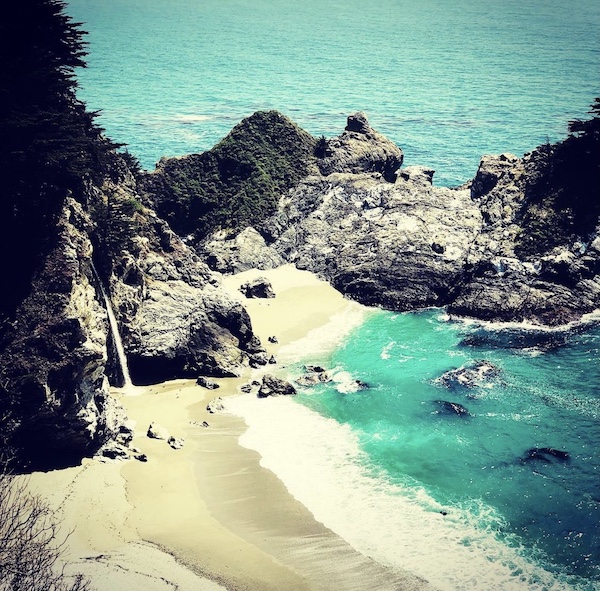
#7. McWay Falls. Located at 52801 Highway 1, Big Sur, this is another family friendly, easy hike from Julia Pfeiffer Burns State Park. The Waterfall Trail is only .6 miles and the reward is seeing the majestic 80 foot waterfall plunging to the turquoise ocean below. For more information, see McWay Falls: Beauty & History in Big Sur.

#8. Tanbark Trail & Tin House to Ewoldsen. For a pretty difficult and longer hike, try the Tanbark Trail and Tin House Loop to the Ewoldsen Trail which will bring you to McWay Falls at the end. This hike starts across the road from Partington Cove. The trail travels through groves of redwoods to a dilapidated yet iconic tin home built in 1944 by Lathrop Brown. It then winds down through the forest to Julia Pfeiffer Burns State Park and McWay Falls. It can be quite confusing to make sure you are on the correct trails, so I would recommend studying up exhaustively before attempting this. For more information, see Big Sur Hikes.
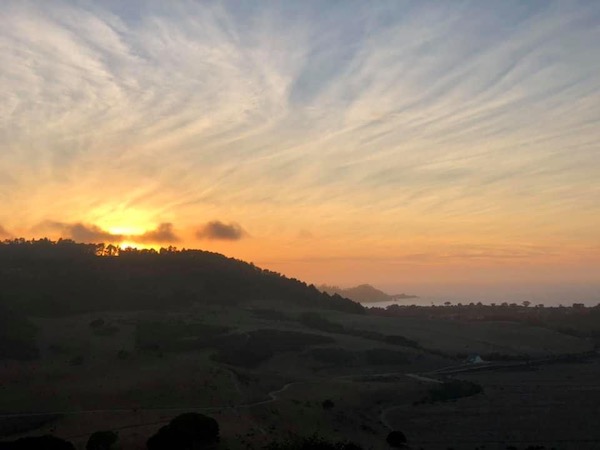
#9. Inspiration Point at Palo Corona Regional Park. Address: 4860 Carmel Valley Road, Carmel, CA. You start out walking past dozens of black mooing cows in a peaceful pasture before you start up a steep incline through coastal oaks. This is a 1.3 mile 850 foot elevation hike with gorgeous birds eye views of the Carmel coastline. I think this would be a great romantic date hike, especially at sunset. Dogs on leash are allowed only in the north park area; no dogs allowed south of South Bank Trail. for more information, see Palo Corona.

#10. Jack’s Peak County Park. Address: 25020 Jacks Peak Rd., Monterey, CA. This park features breathtaking views of the ocean at Monterey Bay. It also has the largest native pine forest in the world. It has eight moderate trails from 1.8 to 6.6 miles. Most trails are fairly narrow so there is a great deal of squeezing by oncoming hikers. Dogs are allowed on leash. There are lots of picnic tables and benches so it’s a great place to enjoy a snack or meal after your hike! For more information, see The Strange Saga of Monterey Jack.

#11. Garland Ranch Regional Park. Located at 700 West Carmel Valley Road, Carmel Valley, CA, this is a very popular spot for hikers with dogs. To enter the park you cross above the lovely Carmel River on a bridge. Inside the park are trails for everyone, from beginners to advanced hikers. Some of the most challenging hikes here include the Snivley’s Ridge Trail which is 14.2 miles and The Pinyon Peak Trail which is an 8.7 mile loop to the old fire lookout tower. For more information, see Garland Park.
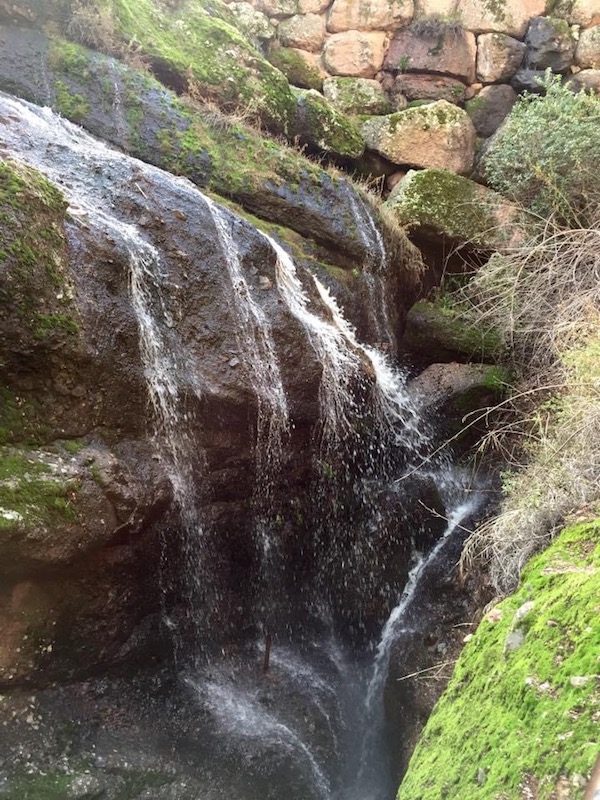
#12. Pinnacles National Park. Address: 5000 Hwy 146, Paicines, Ca. Formed from volcanic activity millions of years ago, Pinnacles is simply stunning. From waterfalls coming through the cave roofs, to stone spires, to doorways formed in rock, to Bear Gulch Reservoir, to wildflowers and more, this is the crème de la crème of hiking areas. There are trails here for everybody, from easy to strenuous. Located in the far southeast corner of Monterey County, Pinnacles has two entrances, one off Hwy 25 south of Hollister, and also east of King City. Dogs are not allowed on any of the hiking trails. For more information, see Pinnacles.
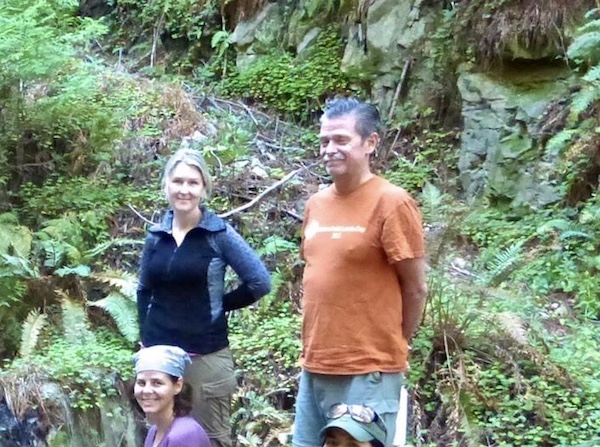
My friend Brian and I hiking with friends in Big Sur back in 2015. I hope you enjoyed this post on my twelve favorite hikes in Monterey County. Thank you for visiting my blog! Wishing you peace, joy, happiness & beautiful vistas.
-
Prettiest Wildflowers in Monterey County, From A-Z

In the spring, life begins anew here in Monterey County. It is definitely my favorite time of year, because everything is lush and green, baby animals, birds, and butterflies begin to appear, and of course, my beloved wildflowers begin to bloom. I first became interested in wildflowers because I found so many on my farm as well as when I was hiking locally. Here is a list of what I think are the prettiest wildflowers in my neck of the woods, from A-Z.

A is for Amaryllis belladonna, also known as Naked Ladies. These bright pink lilies don’t appear until the leaves disappear, hence the name. It’s always magical when they begin blooming! I took this photo a few years ago at my farm. I now have many more because I keep dividing them!
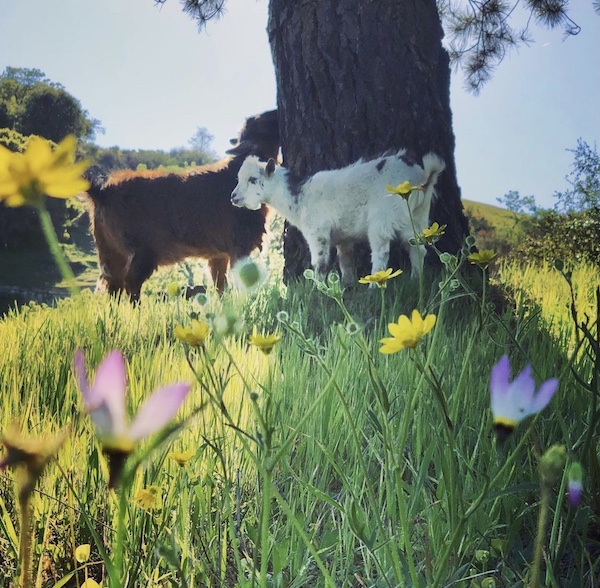
B is for Buttercup. The California Buttercups arrive soon after the Shooting Stars appear here on the farm.

C is for Ceanothus, or California Lilac. Here you see them growing near Bixby Bridge, in Big Sur. I also have them at the farm and the bees just love them!

D is for Digitalis, also known as Foxglove. One thing I love about these is that gophers leave them alone! They are prettiest when grown in groups.

E is for Elegant Canyon Clarkia. Just too gorgeous for words.

F is for Fremont’s Star Lily. I took this photo at Partington’s Cove in Big Sur.

G is for Golden Star, all known as Pretty Face. These also grow wild along my road.
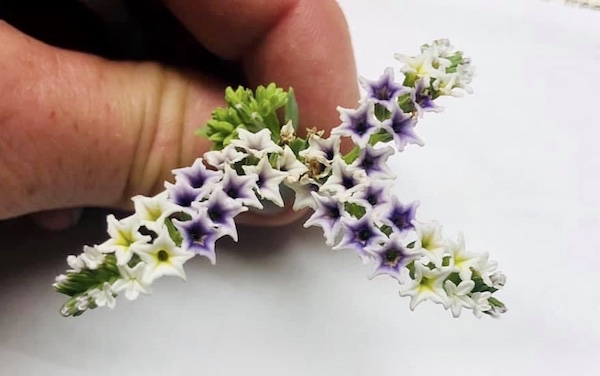
H is for Heliotrope, also know as “Seaside” Heliotrope, although this was way out here in the pastures of heaven! I just think they are so cool, how about you?

I is for Iris. Their vibrant shade is just gorgeous. You see these often down in Big Sur.

J is for Johnny Jump Ups, also known as California Golden Violets. They appear on my farm every year.
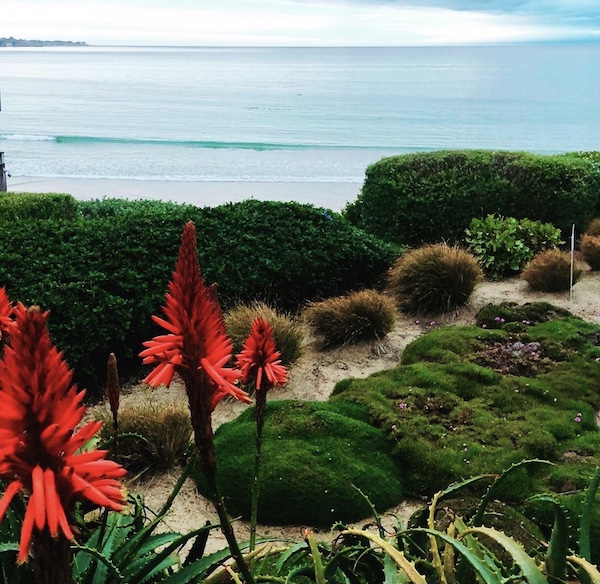
K is for Kniphofia, also known as Red-hot Poker Plant. These tall orange spikes look like candles and are quite stunning in large groups. This photo was taken near Delmonte Beach in Monterey.

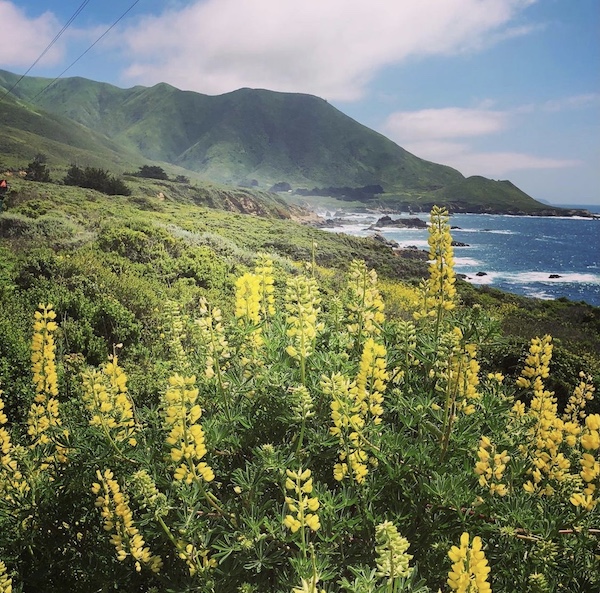
L is for Lupines. Whether purple or yellow, they are so, so pretty. They change my farm into a magical fairy tale every spring, as long as we have enough rain! Sasha enjoys posing amongst the lupines in the countryside near our farm. The second photo is of yellow lupines in Big Sur. Note that it is not the more invasive French Broom, the leaves are a giveaway.
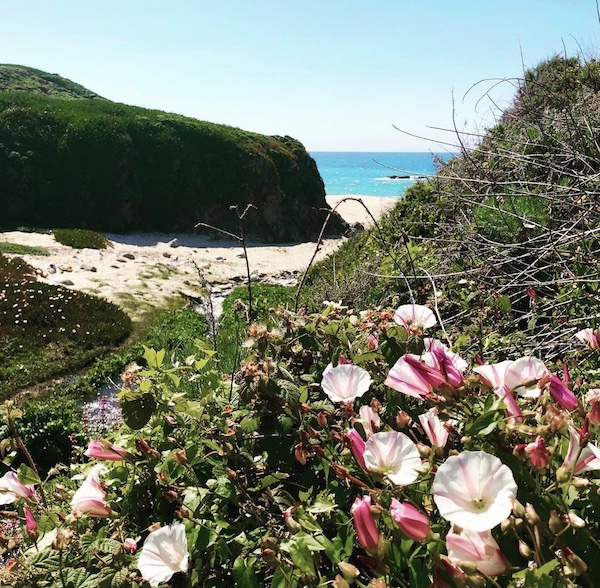
M is for Morning Glories. I love these pink and white ones I found growing along the trail above Garrapata State Beach in Big Sur.
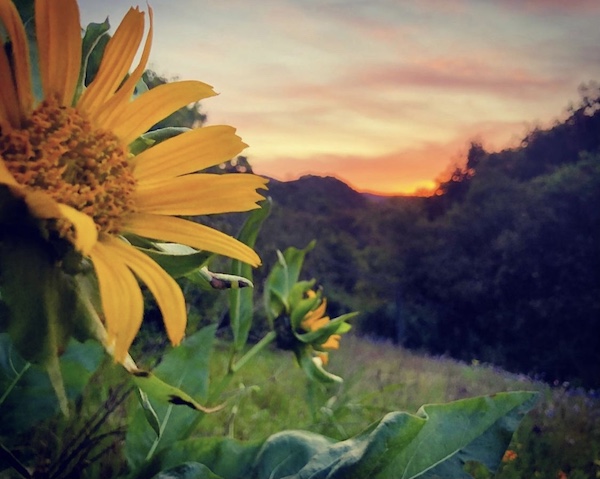
M is also for Mule Ears. They look like sunflowers. This photo was taken at my farm.

N is for Nemophila, commonly called Baby Blue-eyes. These are my favorite spring wildflowers because I just love the color!
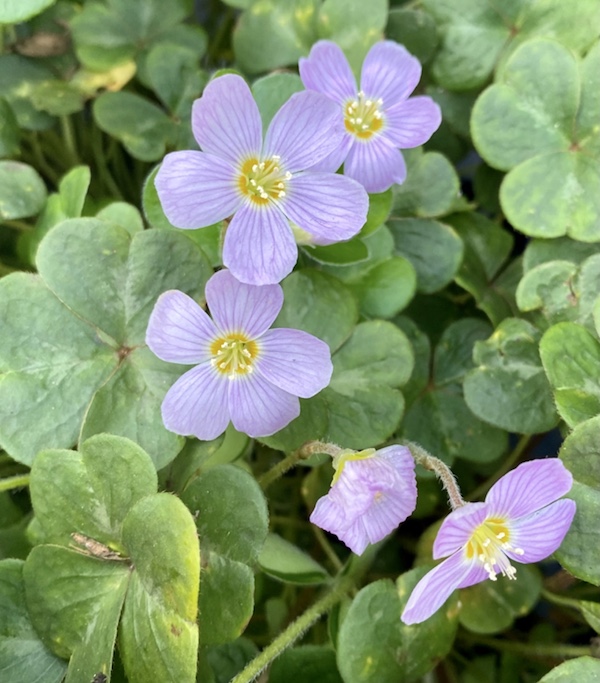
O is for oxalis, also known as Redwood Sorrel. An interesting fact about Redwood Sorrel is that when the leaves are in direct sunlight, they will start to shrivel and fold down. This is because too much sun can harm the shade loving plant.
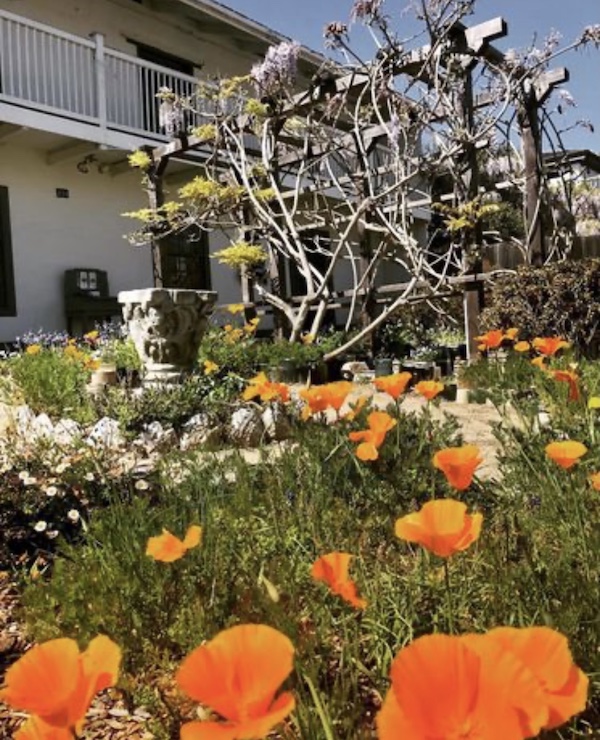
P is for Poppies. California poppies proliferate at Casa Soberanes in Monterey.

P is also for Padre’s Shooting Star, the first flowers to bloom at my farm in the spring! I adore them!
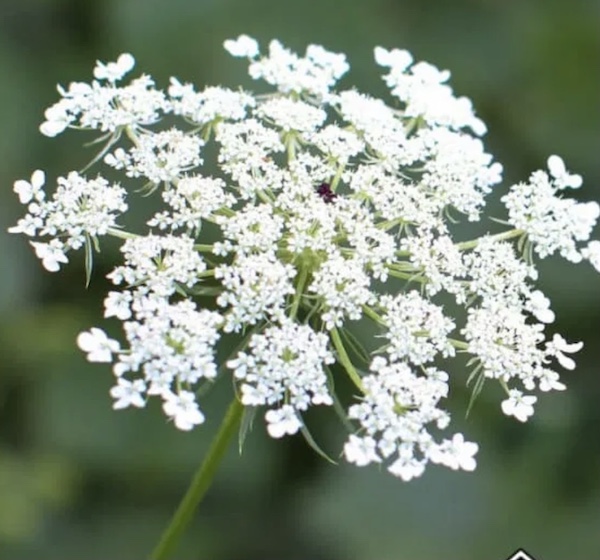
Q is for Queen Anne’s Lace. Named after the ornate lace once worn by the queen of England, this wildflower is beautiful but also quite invasive.

R is for Wild Radish. Also known as Sea Radish, White Charlock and Jointed Charlock, this is in the family Brasicaceae. This photo was taken at Lovers Point in Pacific Grove.
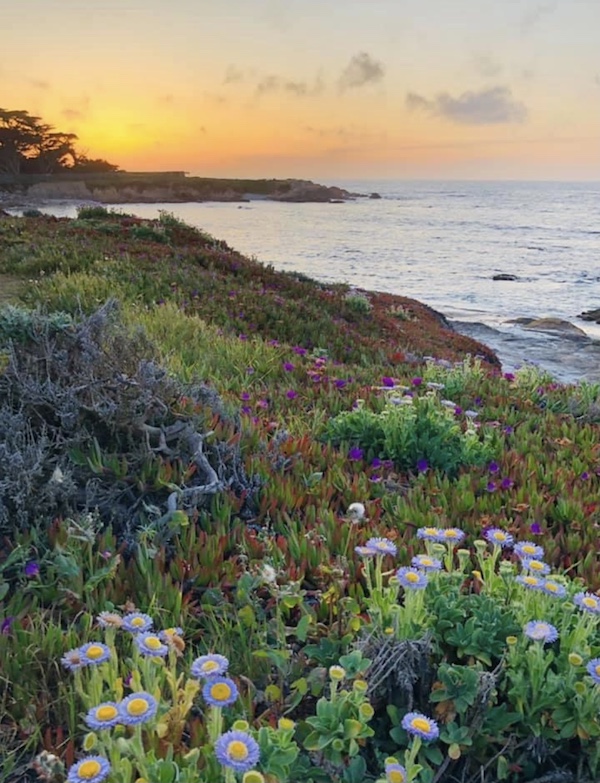
S is for Seaside Daisies. Pebble Beach is the prettiest at sunset, especially when there are wildflowers.

S is also for Sea Statice. Love the crisp color of these blooms with the ocean as a backdrop. This is near Delmonte Beach in Monterey.

T is for Thistle. This photo was taken just north of Rocky Point in Big Sur.

T is also for Tidy Tips. These grow in the pasture near my neighbor’s home. I think these are just the prettiest tiny flowers!
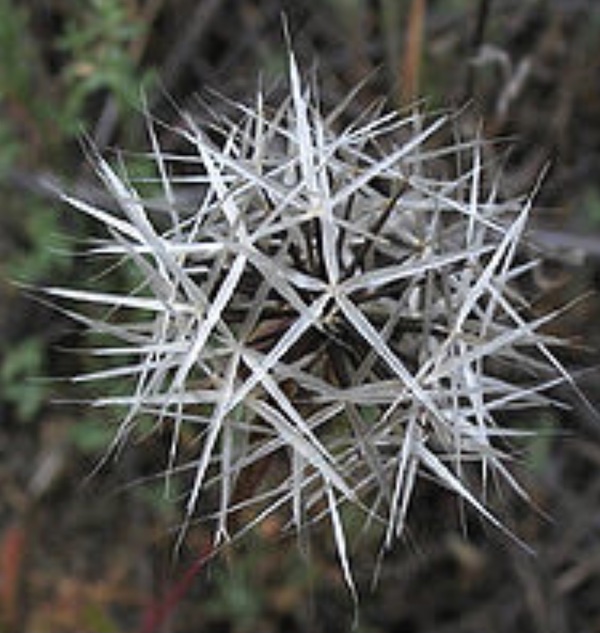
U is for Uropappus, also known as Lindley’s Silverpuffs. They kind of look like dangerous dandelions. Regular dandelions turn from butter yellow to fuzzy white balls that you can make a wish on. These flowers turn into seed needles, and would be considered highly ineffective for wish making. They are, nonetheless, very pretty, (in a scary way).
.
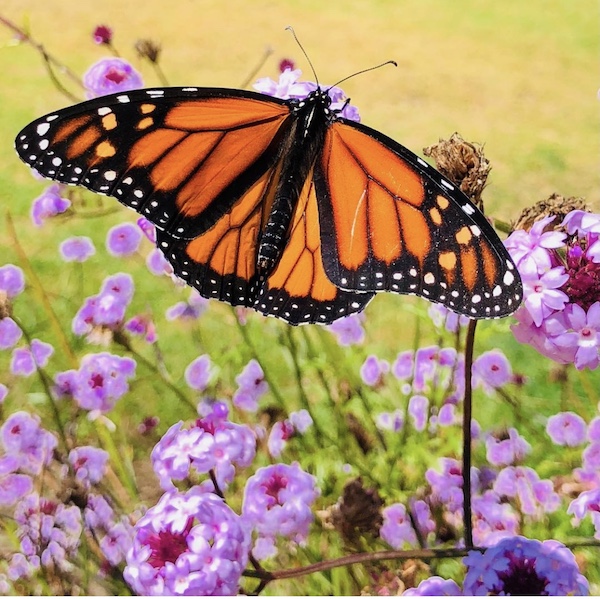
V is for Vinca. This photo was taken at Ragged Point in Big Sur. The monarch butterflies were loving it!
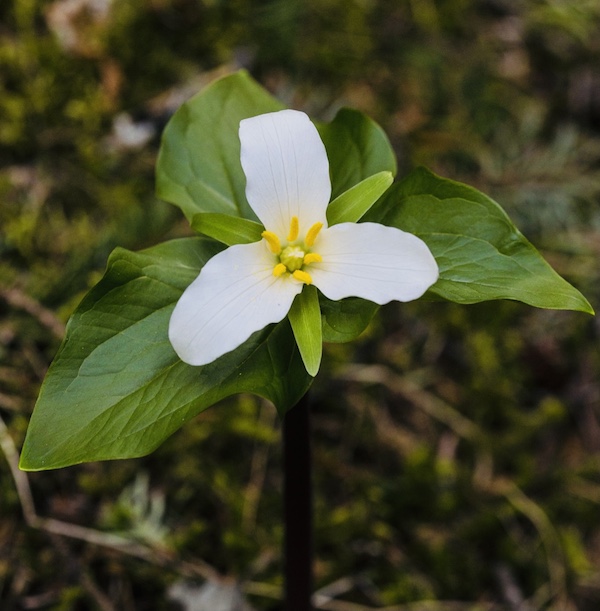
W is for Wakerobin, also known as Western Trillium. It loves moist, shady, wooded areas.
X….so I will admit, I had a heck of a time trying to think of a local wildflower beginning with the letter x. I did some research, and success! Apparently Xerophyllum tenax, also known as Bear Grass and Indian basket grass, grows here in Monterey County! I don’t have any photos, but for more information, see Xerophyllum tenax. I learned that this plant is important for fire ecology. Apparently, is has rhizomes that survive during fires and it thrives with periodic burns. Who knew??

Y is for Yerba Buena. It may not be the prettiest, but it made my list because it’s still important. My friend Brian always points this out to me while hiking. For those of you who love to drink it in tea, here is what it looks like in nature!

Z is for Zantedeschia aethiopica, also known as Calla Lily. My favorite place to see them in the spring is Calla Lily Valley in Big Sur. This is one of the prettiest places to visit in Monterey County!
There are so many wildflowers out there I have yet to find. I love them not only for their beauty, but also for their enchanting names. Who wouldn’t love flowers called “Witches’ Teeth”, “Yawning Penstemon” and “Snouted Monkeyflower”?
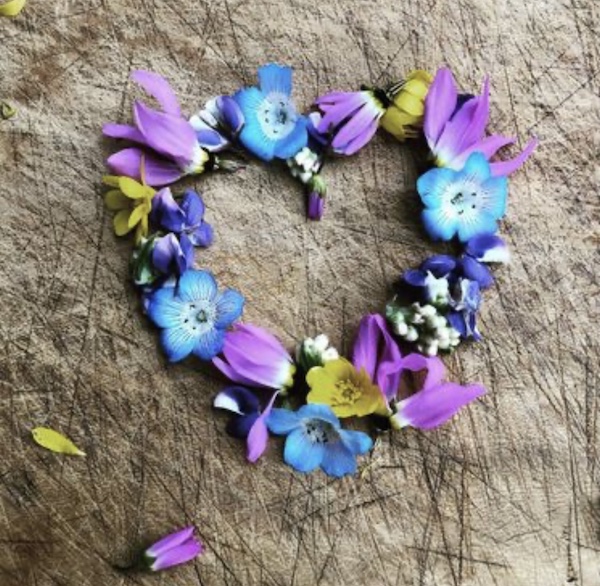
Thank you for visiting my blog! I hope you enjoyed viewing the prettiest wildflowers in Monterey County. I would love to hear which are your favorites! You may enjoy learning more about our wildflowers by reading Monterey County Wildflowers, A Field Guide, by Rod M. Yeager, MD and Michael Mitchell. You may also enjoy Seven Best Places for Wildflowers in Monterey County! Wishing you peace, joy, happiness, and beautiful vistas!
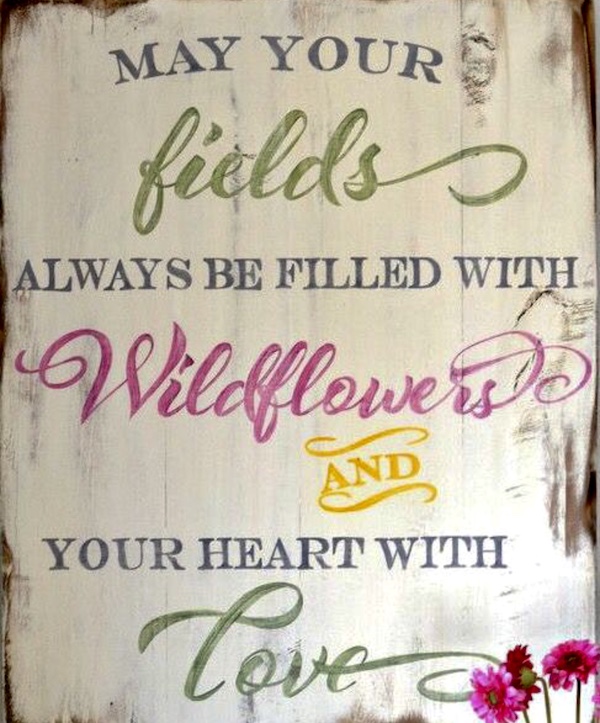
Source: pinterest.com -
The Story of Sister Mary Barbara’s Bunnykins
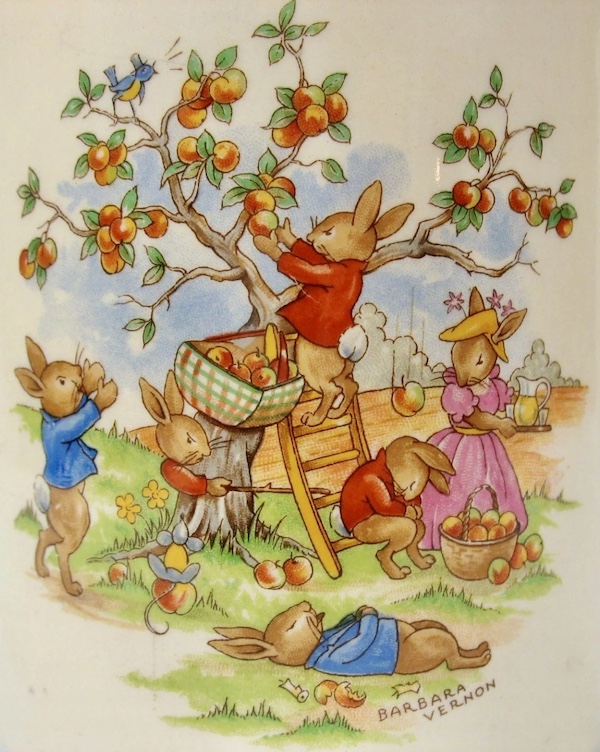
With Easter rapidly approaching, rabbits are making their annual appearance. One of my all-time favorite rabbit designs is the Bunnykins line by Royal Doulton. This pattern has been around since the 1930s. Bunnykins features a bevy of bunnies cavorting and cute, colorful artwork.. Its popularity exploded worldwide after it was adopted by the British royal family’s young daughters, princesses Elizabeth and Margaret. It is still enjoyed by many today.

Bunnykins were created by Barbara Vernon Bailey, aka Sister Mary Barbara, a Catholic nun. Barbara’s father, Cuthbert Bailey, was the general manager of Doulton. Raised in the Shropshire countryside in England with her siblings, Miss Bailey began drawing and painting at a young age. Barbara loved animals and the family pets, farmyard animals, and wildlife around her, including rabbits, were her favorite subjects. Interestingly, she never received any formal training. Who could have known at this time that her whimsical watercolors would someday launch a line that would charm the world for decades?
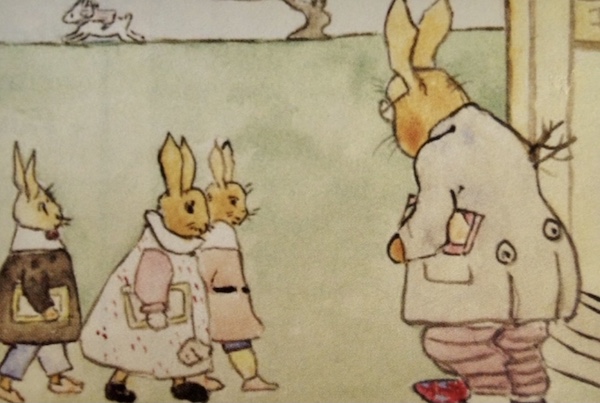
Source: doultoncollectorsclub.com 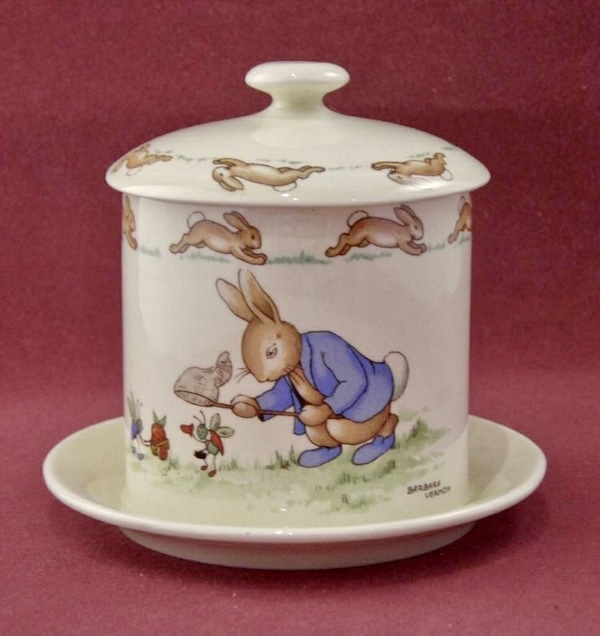
Barbara Bailey joined a convent as a nun at just 19 years of age and began to teach at the school there. Shortly after, her father recalled that as a child, Barbara had demonstrated a clever talent for sketching animals. He asked her to illustrate a new line of nursery ware. Although a busy teacher at her convent’s school, she received permission to create the artwork as long as it remained secret and did not interfere with her teaching duties, prayer and devotions. The convent’s prioress also stipulated that neither she nor the convent receive any monetary gain from her work, despite their financial need (they could not even afford electricity!).

Sister Mary Barbara lived until the ripe age of 92. The beloved pieces Sister Mary Barbara created featured rabbits and other animals having fun in every day activities, such as eating ice cream, building sand castles, baking with mother bunny, having a picnic, fishing, reading bedtime stories, and other real life activities that children enjoy. The earliest pieces, created in the 1930s, were often signed “Barbara Vernon”, and these pieces are the most valuable. Bunnykins pieces also include figurines, ornaments, banks, etc. As a teacher, Sister Mary Barbara loved helping children learn and grow. She stated that her idea for placing pictures at the bottom of her bowls was to “encourage young children to finish their morning meal”.
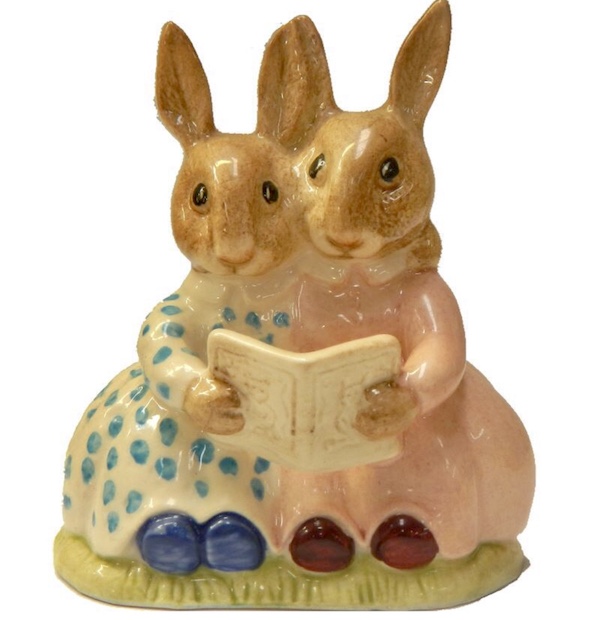
Fun facts about Bunnykins china:
- On early pieces, religious references may be found, for example, early mother bunnies often wore blue in honor of Mary, the mother of Jesus.
- Sister Mary Barbara sketched all her bunny scenes by candlelight, either late at night or very early in the morning. It was not just a question of having no electricity. She also was honoring her commitment to the convent to complete all her duties as a nun and teacher. Perhaps this is where the phrase “burning the candle at both ends” comes from?
- Early father bunnies were based on Sister Mary Barbara’s father, often wearing round spectacles and holding a pipe, just as he did in real life.
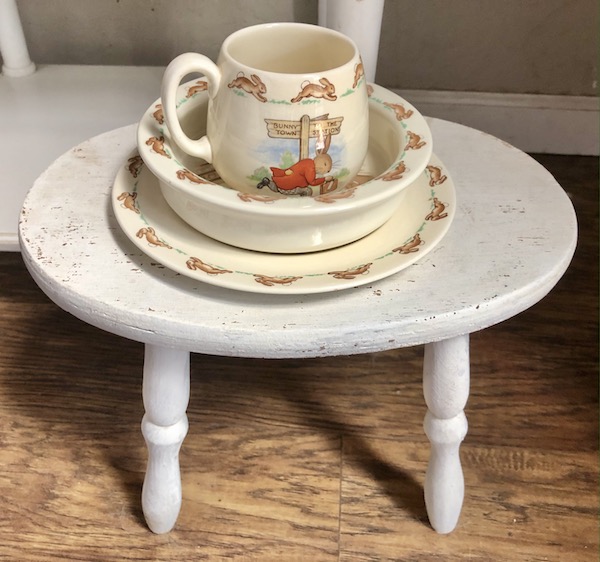
For more infomation on Bunnykins and Royal Doulton, see Antiques, Royal Doulton, and Barbara Vernon Bailey. You may also enjoy The Charlton Standard Catalogue of Royal Doulton Bunnykins by Jean Dale and Louise Irvine.

Thank you for visiting my blog! I hope you enjoyed learning about Sister Mary Barbara and Bunnykins. You may also enjoy my other posts My Favorite Easter Baskets of 2021, and Rabbit Romance: My Love Affair With Bunnies. Wishing you peace, love, happiness, and a very happy Easter!